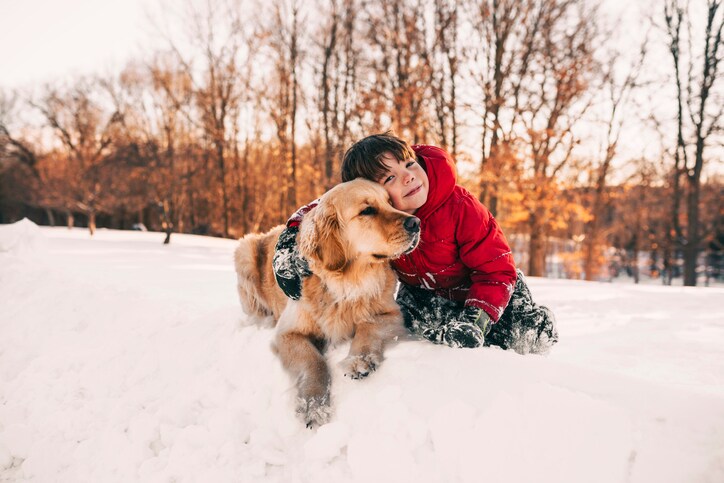Brr, it’s cold out there! Here are 10 tips for keeping your cat or dog safe during the winter months.
You always dig out your scarves and cosy socks the minute the temperature drops, but what do you do to keep your pet warm and comfortable during the colder seasons? Your pet’s fur coat is no guarantee against the winter chill.
What are some things you should look out for? Here are 10 winter safety tips for pets:
1. Watch for signs of weather-related issues
When you’re outside with your pet during the wintertime, it’s important that you constantly check to see if he’s shivering, slowing down or just looking weak in general. Unfortunately, pets are also susceptible to frostbite just like humans. As such, you should always examine under your pet’s fur for red or pale grey patches.
2. Give your pet more food
During the winter, your dog burns extra energy as he pushes through all the snow and ice. As a result, he’ll need to consume a few extra calories to stay healthy. Be sure to give him an extra helping (or two) of food every once in a while.
3. Opt for clothes
Sure, those dog sweaters and coats may look a little silly, but adding this extra layer can make a big difference during a deep freeze. Your pet will thank you.
4. Know your breed
Some dogs, such as Bernese mountain dogs and Alaskan malamutes, rejoice when the thermometer’s mercury dips. However, smaller, short-haired pups may not be keen on long walks in the cold. Be sure to plan your outings accordingly.
5. Beware of chemicals
Ice melt, antifreeze and other winter additives can be irritating and even toxic to your cat or dog. As such, it’s important that you wipe up any spills in your driveway or garage as soon as possible. And don’t forget to clean off your pet’s paws when you come back inside after a walk! If you don’t, the chemicals could potentially sink in and burn his skin. Be sure to remove any chunks of frozen snow or ice, too.
6. Avoid ice
It’s hard to tell whether a frozen pond could hold your pet’s weight, so it’s best to avoid them altogether.
7. Take note of warnings
You should always pay close attention to weather reports during the winter months. That way, you can have plenty of time to prepare for any big storms that may be on the way. If you think you’re going to be stuck inside for a day or two, you should make sure to stock up on your dog’s or cat’s medications, food and treats.
8. Say no to snow
Sure, your pup may be thirsty, but that doesn’t mean that you should let him lap at a pile of the white stuff. You never know what icky things are lurking in there. Instead, make sure to keep your pet well-hydrated by refilling his water dish on a regular basis. And don’t forget to replace a dish of water that freezes in your backyard or garage.
9. Protect your pet’s feet
Your pet deserves some cute booties, too! After all, ice, salt and other rough patches on the ground can irritate her paws. To be safe, you should dress your furry friend up in outdoor socks made of rubber.
10. Stay in as much as possible
Unfortunately, there will be some days when the weather is just so terrible that you won’t want to venture outside at all. If you live in an area that experiences severe winters with bitterly cold temperatures and biting wind, you should consider having your dog walk in small spurts. You can run out just long enough for your dog to do his business, and then head right back home to snuggle up under a warm blanket.
Jennifer Kelly Geddes is a New York-based writer and editor who specialises in parenting, health and child development. She’s a frequent contributor to Care.com and the mom of two teen girls.
* This article is for general informational purposes only. It is not intended nor implied to be providing medical advice and is not a substitute for such advice. The reader should always consult a health care provider concerning any medical condition or treatment plan. Neither Care.com nor the author assumes any responsibility or liability with respect to use of any information contained herein.
